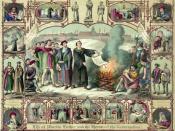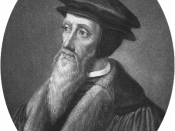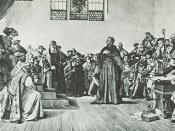The Protestant Reformation, led by such figures as Martin Luther and John Calvin, was a turning point in Western European history. In the sixteenth century the Church was loosing power quickly and people were loosing faith due to the inability of the church to save people during The Black Death, which vanished one third of Europe's population. Events like the Babylonian Captivity and the Great Schism ended up being a political nightmare for the Roman Catholic Church because citizens were realizing that the church couldn't govern itself and the Church was loosing its prestige. Finally the spirit of humanism, which swept Europe in the fifteenth and sixteenth century, encouraged many people to question the church's teachings and attacked the abuses of the church. During this period Martin Luther and John Calvin, who where quickly gaining more and more followers, arose and protested against the abuses of the Roman Catholic Church.
Although Luther and Calvin both wanted to reform the church to stop its corruption, they differentiated on certain ideas of the Roman Catholic Religion such as predestination and theocracy, which were popular issues in the Protestant Reformation that brought social and political implications to Europe in the sixteenth century.
Martin Luther was the most prominent figure of the Reformation. He was a German Augustinian Friar and a theologian at the University of Wittenberg who was not afraid of expressing his opinion on the church's corruption. He was forced to protest after the church exceeded its corruption with the sales of indulgences and Simony. The selling of indulgences was a practice in which church leaders sold indulgences as pardons; supposedly to reduce punishments for certain sins. The money was undoubtedly going to the church to fund church activities. Martin Luther was powerfully against Simony, the selling of church positions for...


